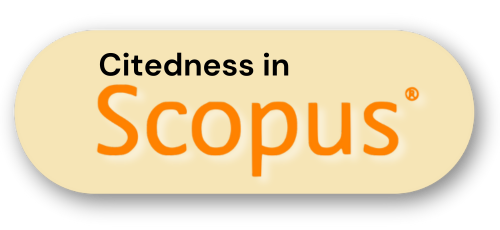Study of Tajweed and Waqf Marks in the Qur'an Bone Mushaf
DOI:
https://doi.org/10.61194/ijis.v1i1.46Keywords:
Mushaf Bone, Signs of Tajweed, Signs of WaqfAbstract
The purpose of this paper is to describe the characteristics of the Bone manuscript from the aspect of punctuation, both tajweed and waqaf. Because this manuscript is so complex, all aspects touch on every part of this manuscript, the aspects that will be discussed in this manuscript are aspects of tajwid and waqf signs. Reading the Qur'an with recitation is a non-negotiable necessity, so it is important to pay attention to the laws of nūn mati, mim mati, ikhfa or iqlab, as well as about the law of reading mad and others. This is the reason why the ancient Qur'anic copiers included the tajweed signs they thought were necessary. In this ancient mushaf, for example, it is clear about the efforts made by the writers to give certain signs to the tajwid readings and so do the waqf signs. For tajwid markings on Bone mushafs, use the letter غ for gunnah, the letter خ for ikhfa' and the letter ظ for idzhar reading, for mad obligatory muttasisil readings it is marked with a set of three lines with a red line above. While reading mad jaiz munfasil is marked with a red line. Meanwhile, the waqf sign used in this manuscript is ط for mutlaq waqf, the letter ك is for waqaf kafi', and the letter ت is for tamm waqf.
References
Abrahamian, E. (2009). Why the Islamic republic has survived. Middle East Report, 39(250), 10–16. https://www.scopus.com/inward/record.uri?eid=2-s2.0-65549087145&partnerID=40&md5=a78e9e80eb275caa50d6db8e5256ec3c
Alhammadi, S., Archer, S., & Asutay, M. (2020). Risk management and corporate governance failures in Islamic banks: a case study. Journal of Islamic Accounting and Business Research, 11(9), 1921–1939. https://doi.org/10.1108/JIABR-03-2020-0064
Asror, A. (2017). Transformative propagation1 of Islamic boarding school in response to contemporary challenges. Pertanika Journal of Social Sciences and Humanities, 25(August), 187–194. https://www.scopus.com/inward/record.uri?eid=2-s2.0-85051414966&partnerID=40&md5=732bcd3a84842bd2c8bb4e169fe64ee6
Fuad, K., Ifada, L. M., Setyawan, H., & Handayani, R. T. (2021). An Analysis in the Application of the Unified Theory of Acceptance and Use of Technology (UTAUT) Model on Village Fund System (SISKEUDES) with Islamic Work Ethics as a Moderating Effect. Lecture Notes in Networks and Systems, 278, 347–356. https://doi.org/10.1007/978-3-030-79725-6_34
Hamjah, S. H., Rahim, N. C. A., Hashim, N. M., Bahari, N., Zuliza Mohd, K., Majid, L. A., Saidon, R., & Illias, M. Z. (2022). A quantitative study on Muslim milk mother’s understanding of the Islamic concept of wet nursing. PLoS ONE, 17(5 May). https://doi.org/10.1371/journal.pone.0265592
Hidayah, N. (2019). Islamic Law and Women’s Rights in Indonesia: A Case of Regional Sharia Legislation. Ahkam: Jurnal Ilmu Syariah, 19(1), 19–38. https://doi.org/10.15408/ajis.v19i1.11717
Indrawati, I., Nurhasan, N., & Soetomo, S. (2022). THE SHIFTING OF ISLAMIC HERITAGE FROM EDUCATION CENTER TO WORSHIP TOMB (THE EFFECT OF THE POLITICAL POLICY). Journal of Islamic Architecture, 7(1), 11–18. https://doi.org/10.18860/jia.v7i1.15127
Kabir Hassan, M., Fazlul Karim, M., & Sydul Karim, M. (2018). Experiences and lessons of cash Waqf in Bangladesh and other countries. Journal of Islamic Economics, Banking and Finance, 14(1), 102–123. https://doi.org/10.12816/0051170
Raja Adnan, R. A., Abdul Mutalib, M., & Ab Aziz, M. R. (2022a). Factors necessary for effective corporate waqf management for Malaysian public healthcare. ISRA International Journal of Islamic Finance, 14(1), 73–88. https://doi.org/10.1108/IJIF-11-2019-0178
Raja Adnan, R. A., Abdul Mutalib, M., & Ab Aziz, M. R. (2022b). Factors necessary for effective corporate waqf management for Malaysian public healthcare. ISRA International Journal of Islamic Finance, 14(1), 73–88. https://doi.org/10.1108/IJIF-11-2019-0178
Sitti Mania, H. (2018). Evaluasi Pelaksanaan Program Character Building Training di Universitas Islam Negeri Alauddin Makassar. ISLAMIC COUNSELING Jurnal Bimbingan Konseling Islam, 2(1). https://doi.org/10.29240/jbk.v2i1.465
Sutiah, S., Kholid, A., Purba, A. S., & Slamet, S. (2021). Improving the competitiveness of Islamic higher education: Study approaches to development of human resource competencies (HR. Review of International Geographical Education, 11(3), 477–493.
Abdullah, Anzar. "Islamization in South Sulawesi in a Historical Perspective." Paramita: Historical Studies Journal 26, no. 1 (2016): 86. https://doi.org/10.15294/paramita.v26i1.5148.
Akbar, Ali. Khazanah Mushaf Kuno Nusantara", in Indonesian Philology and Islam, (ed. Oman Fathurrahman, et al). Jakarta: Research and Development and Training Agency of the Ministry of Religious Affairs of the Republic of Indonesia, 2010.
Akbar, Ali. "Qur'an manuscripts from West Sulawesi: A study of several aspects of codicology." SUHUF Journal of Qur'anic and Cultural Studies 7, no. 1 (2014): 15–4.
Akbar, Ali. "Getting to know the Bugis Mushaf Corpus." Https://Lajnah.Kemenag.Go.Id/Artikel/Mengenal-Korpus-Mushaf-Bugis, 2019.
Akbar, Ali. Ancient Mushaf of the Archipelago of Sulawesi & Maluku. Lajnah Pentashihan Mushaf Al-Qur'an Research and Development Agency and Training of the Ministry of Religious Affairs of the Republic of Indonesia, 2018.
Arib, J M, and S Mokodenseho. "Mushaf Bone: A Study of the Codicology, Writing, Text and Visual Aspects of the Qur'an," 2020. https://osf.io/preprints/u3qwm/%0Ahttps://osf.io/u3qwm/download.
Fadhal AR. Bafadhal (ed.), et al. Indonesian Ancient Mushafs. Jakarta: Puslitbang Lektur Agama Depag RI, 2005.
Fadlly, Harits. "Tajweed Colors in the Mushaf of the Qur'an." Ṣuḥuf 13, no. 2 (2020): 339–53.
Gallop, Annabel Tea. "The Boné Qur 'an from South Sulawesi," n.d., 162–73.
Mustopa, Mustopa. "Some aspects of the use of rasm and tajweed marks in the ancient mushaf of Linga." Suhuf 8, no. 2 (2015): 283–302. https://doi.org/10.22548/shf.v8i2.6.
Rahmayani, Tati. "Manuscript Characteristics of Mushaf H. Abdul Ghaffar in Madura." No. 3, no. 2 (2017): 59–80.
Ridha, Ahmad. "Islamization of the Kingdom of Bone (A Historical Review) Thesis." Alauddin State Islamic University (UIN) Makassar, 2013.
Rohmana, Jajang A. "Four Qur'an Manuscripts in Subang, West Java (Codicological Study of Qur'an Manuscripts)." Insights: Scientific Journal of Religion and Socio-Culture 3, no. 1 (2018): 1–16. https://doi.org/10.15575/jw.v3i1.1964.
Rozi, Fahrur. "Repositioning Tanda Waqaf (Critical Analytical Study of Indonesian Standard Mushaf)." Dissertation, 2020, 1–497.
Saefullah, Asep. "Aspects of Rasm, Punctuation, and Calligraphy in Ancient Mushafs of Bayt Al-Qur'an Collection & Istiqlal Museum, Jakarta." SUHUF Journal of Qur'anic and Cultural Studies 1, no. 1 (2008): 87–110. https://doi.org/https://doi.org/10.22548/shf.v1i1.136.
Shaifuddin, &; Muhammad Musadad. "Some Characteristics of the Ancient Qur'anic Mushaf Site of Girigajah Gresik," n.d., 1–21.
Shatri, Jonni. "Mushaf of the Ancient Qur'an in Priangan Study of Rasm, Verse Signs, and Waqf Signs." Suhuf 6, no. 2 (2013): 295–320.
Shatri, Jonni. "The transformation of the Tajweed Guide to the Qur'anic Mushaf: Changes in letters and forms of presentation." Suhuf 13, no. 2 (2020): 309–37.
Zarkasi. "Qiraat in Ancient Mushaf and Standard Mushaf Comparison of Qiraat Mushaf Collection of La Galigo Museum Makassar and Indonesian Standard Mushaf Qiraat in Ancient Mushaf and Standard Mushaf: The Comparison of Mushaf of La Galigo Museum Collection of Makassar and Ind" 10, no. 2 (2017): 395–412. http://jurnalsuhuf.kemenag.go.id.






